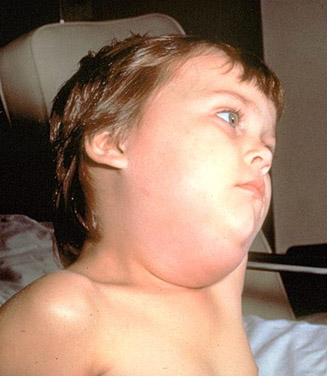
Around 50 per cent of the men had human papillomavirus (HPV) which often goes undetected and is easily passed on during unprotected sex.
Of that group, around six per cent of men yearly contract a new HPV 16 infection, the virus most well known for causing cervical cancer in women and also causing cancers in men.
While the majority of the nearly 200 known types of HPV cause no symptoms in most people, some cause warts while others leads to cancers of the genitals and throat.
The study further reinforces calls for a for a male HPV vaccination programme to be rolled out worldwide to nip the infection in the bud.
Girls between 12 and 18 in this country are offered the jab.
The study found men who had more than one lover were more prone to catching the virus.
Professor Anna Giuliano of the H Lee Moffitt Cancer Center and Research Institute in Tampa, Florida, found 32,000 cases of cancers in men and women in the USA in 2009 were attributable to HPV infection.
It also found anogenital warts were the most common result of HPV, with 205 cases per 100,000 diagnosed every year in the USA.
In addition to the diseases HPV causes directly in men, the virus is readily transmitted from men to women putting them at greater risk.
Professor Giuliano said: “The incidence of genital HPV infection in men was high and relatively constant across age groups in Brazil, Mexico, and the USA.
“The results from this study provide much needed data about the incidence and clearance of HPV infection in men; these data are essential for the development of realistic cost-effectiveness models for male HPV vaccination internationally.”
Dr Joseph Monsonego of the Paris-based Institute of the Cervix added: “The cost-benefit ratio of vaccinating men to protect women from cervical neoplasia has yet to be definitively established.
“However, as more diseases are prevented through male vaccination, notably anal cancer, the greater the cost-effectiveness of routine vaccination of both sexes.
“Although we will continue to encourage protective measures, condom use and safe sex practices are of little value in clinical practice, with prevention of HPV transmission and its consequences still unconfirmed.
“HPV vaccination of men will protect not only them but will also have implications for their sexual partner.”
The study analysed 1159 men aged 18 to 70 years from the USA, Brazil, and Mexico, all of whom were HIV negative and had no history of cancer.
They were assessed every six months for an average of more than two years and it found the incidence of a new genital HPV infection with any HPV type was 38.4 per 1000 person months.
The chances of cancer-causing (oncogenic) HPV infection was 2.4 times higher from men who had had 50 or more female partners compared with no partners or just one partner and 2.6 times higher for men who had at least three male anal sex partners compared with no recent partners.
The average duration of HPV infection was seven and a half months for any HPV and 12 months for the cancer-causing HPV type 16.
There has been a 50 per cent rise in cases of a type of mouth cancer in the last twenty years and the increase appears to be because of HPV, earlier research has shown.
HPV also causes 80 per cent of cervical cancer cases.
The findings are published online in the Journal Lancet.